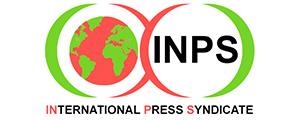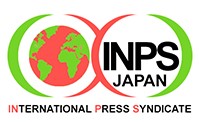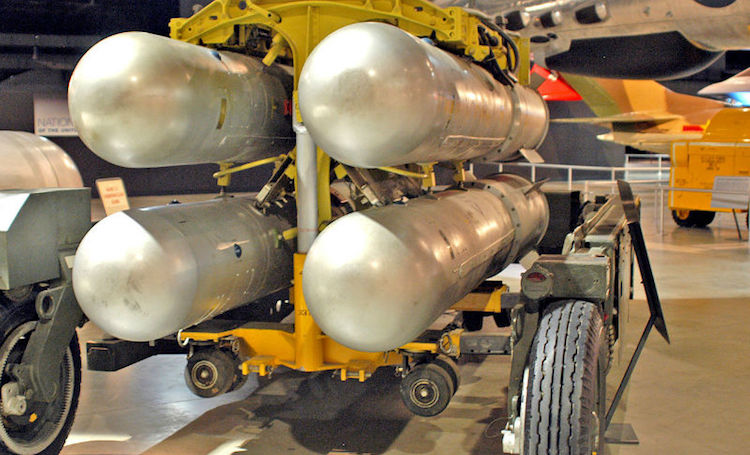By Santo D. Banerjee
NEW YORK (IDN) – A conference on the establishment of a Weapons of Mass Destruction-Free Zone (WMDFZ) and a Nuclear Weapons-Free Zone (NWFZ) in the Middle East appeared to have been consigned to oblivion until the First Committee of the United Nations General Assembly (UNGA) decided in December 2018 “to entrust to the Secretary-General the convening” of an international meeting to address the risk of nuclear proliferation in one of the world’s most volatile regions. [2019-04-22 | P02] ARABIC | JAPANESE TEXT VERSION PDF | SPANISH
The importance of the First Committee resolution lies in the fact that as part of a package of decisions that resulted in the indefinite extension of the Non-Proliferation Treaty (NPT), the 1995 NPT Review Conference called for “the establishment of an effectively verifiable Middle East zone free of weapons of mass destruction, nuclear, chemical and biological, and their delivery systems.”
First tabled by Egypt in 1990, the WMDFZ proposal expanded on longstanding calls to establish a NWFZ in the Middle East. Both measures, intended to be pursued in parallel, have gathered broad international support but practical progress has since been elusive.
On December 22, 2018 the First Committee voted a revised draft by Algeria, Bahrain, Comoros, Djibouti, Egypt (on behalf of the League of Arab States that are UN members), Iraq, Jordan, Kuwait, Lebanon, Libya, Mauritania, Morocco, Oman, Qatar, Saudi Arabia, Somalia, Sudan, Tunisia, United Arab Emirates (UAE), Yemen and the State of Palestine.
The First Committee – also known as the Disarmament and International Security Committee or DISEC – asked the UN Secretary-General to convene annual sessions of the conference for a duration of one week at UN Headquarters “until the conference concludes the elaboration of a legally binding treaty establishing a Middle East zone free of nuclear weapons and other weapons of mass destruction”. The Secretary-General is further asked to report annually to the General Assembly on developments in this regard.
Israel, Micronesia and the United States voted against the resolution and 71 countries abstained.
Against this backdrop, it remains to be seen whether the Middle East WMDFZ and NWFZ turns out to be achievable or a sheer phantasmagoria.
Among pre-conditions for convening the conference are: whether it shall take as its terms of reference the resolution on the Middle East adopted by the 1995 NPT Review Conference; and whether it shall aim at elaborating a legally binding treaty establishing a WMDFZ and NWFZ in the Middle East, on the basis of arrangements freely arrived at by the States of the region; and whether all decisions emanating from the conference shall be taken by consensus by the States of the region.
The conference is furthermore required to affirm the special responsibility of the three co-sponsors (USA, Russia, UK) of the resolution on the Middle East adopted by the 1995 Conference – as the depository States of the NPT, and call upon them to fulfil their relevant obligations in accordance with the agreed outcomes of the 1995, 2000 and 2010 NPT Review Conferences.
The First Committee resolution also calls for the International Atomic Energy Agency (IAEA), the Organisation for the Prohibition of Chemical Weapons (OPCW) and the Biological Weapons Convention (BWC) Implementation Support Unit to prepare the background documents necessary for the conference.
Briefing the Security Council on April 2, 2019, IAEA Director General Yukiya Amano said that in 2012, the Agency provided background documentation to the facilitator for the United Nations Conference on the establishment of a Middle East WMDFZ and NWFZ a Middle East zone. It described the work undertaken by the IAEA and the experience gained concerning modalities for a zone free of nuclear weapons in the Middle East.
“If requested by Member States, the IAEA can play a role in nuclear disarmament by sharing its experience in the implementation of verification,” Amano added.
The Russian Foreign Ministry described the UNGA First Committee decision as “logical, well-balanced” and one that “meets the interests of all Middle East countries”. It stressed the importance of its going in line with the earlier reached agreements to this respect – openness and voluntariness of participation in the conference of the region’s states; understanding that any agreements on the issue can be achieved through a free dialogue between the countries of the Middle East and only on the basis of consensus; absence of artificial time frames.
As a new report by the Stockholm International Peace Research Institute (SIPRI) points out, international efforts to rid the Middle East of nuclear weapons go back over four decades. With the so-called Middle East resolution of 1995, such efforts – and the broader goal of establishing a WMD-free zone in the region – became part of the 1968 NPT review process.
The key question that has long divided states over the proposed WMD-free zone is whether it should be viewed as a means to a more stable and secure Middle East or result from an improved regional security environment, says Tytti Erästö, author of the report published in January 2019.
While the author sees no easy way to reconcile the challenges linked to the sequencing of the talks, it seems clear that any future attempts to promote a Middle East WMD-free zone must incorporate both perspectives. Though neither of the approaches is likely to prevent discord over the Middle East resolution at the 2020 NPT Review Conference, both have the potential to promote regional arms control and disarmament objectives, and thus strengthen the NPT in the long term, notes the report.
The first approach – launching the WMD-free zone process without the region’s only nuclear weapon state – would be relatively easy to implement, argues the report. “Provided that other Middle Eastern states were ready to take the leap of faith required to initiate a constructive arms control dialogue, or even to strengthen their own arms control commitments, without waiting for reciprocal steps from Israel, they could make significant progress among themselves in setting the stage for a WMD-free zone.”
According to Erästö, such an approach has received new political momentum in the wake of the UNGA First Committee calling for the conference on the Middle East WMD-free zone to be held under the auspices of the UN. “The plan could prove successful if the level of normative ambition by the Arab states and Iran is sufficient to sustain the process.”
Support for the plan by all three depositary states might also increase the chances of Israeli participation, and function as a safety valve for the tensions over the unimplemented Middle East resolution in the context of the NPT.
As Kelsey Davenport, Director for Non-Proliferation Policy at the Arms Control Association notes, an impediment to a WMDFZ and NWFZ proving achievable lies in the fact that despite extensive international support and the catalogue of resolutions endorsed including by all regional states, practical progress has been stymied by sharp disagreements between countries in the region over the terms and the sequence of steps leading to the establishment of the zone.
Reflecting differing perceptions of threat and security concerns existing in the region, Israel has closely linked discussions on the establishment of the WMDFZ with the existence of durable peace and compliance with international obligations by states in the region. Arab states have said that no such linkage should exist and that the establishment of WMDFZ would contribute to peaceful relations.
Besides, a future WMDFZ would commit parties not to possess, acquire, test, manufacture or use any nuclear, chemical and biological weapons as well as their delivery systems as provided for in the 1995 NPT Review Conference Middle East resolution.
Definitions for what constitutes these types of non-conventional weapons are contained in international treaties on nuclear, chemical and biological weapons,as well as the 1948 United Nations Commission for Conventional Armaments. A shared understanding would also be required to regulate the types of delivery systems that would become subject to the prohibitions under the zone. [IDN-InDepthNews – 22 April 2019]
Photo: Nuclear disarmament in the Middle East. Credit: USA Air Force.


